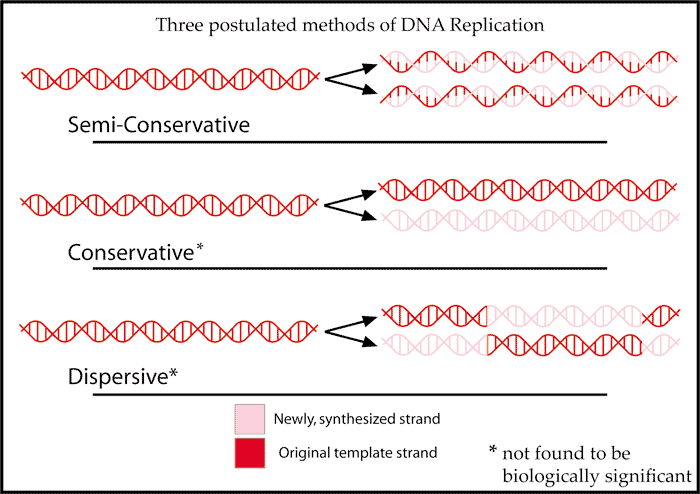First hypotheses on DNA replication
The double helix structure of DNA is ideal to allow its replication. It presents great stability because they are two complementary chains intertwined, and if an enzyme separates them, each chain can serve as a template to be able to synthesize the complementary chain.
Three alternative hypotheses were put forward on how DNA replication takes place:
The conservative hypothesis proposes that each strand of original DNA serves as a template for a new complementary strand. Later, the two old chains join, and on the other hand, so do the two new chains, leaving a totally new molecule, a copy of the original.
The dispersive hypothesis proposes that the original DNA molecule fragments, each fragment replicating itself. Later, they will join forming chains made up of fragments of ancient DNA and newly synthesized DNA.
The DNA strands are separated, each serving as a template for another new strand. Thus, each daughter molecule would have an old and a modern chain, formed by the union of nucleotides with complementary nitrogenous bases. It was proposed by Watson and Crick .
The hypothesis that was confirmed was the semi-conservative hypothesis, thanks to the experiment of Meselson and Stahl in 1958.
